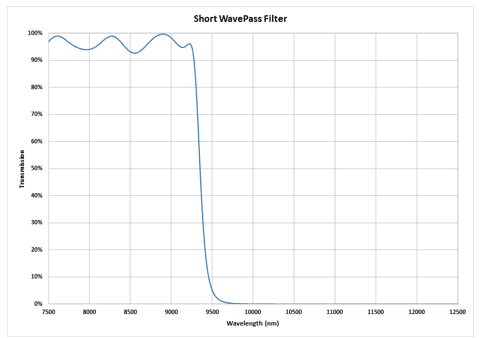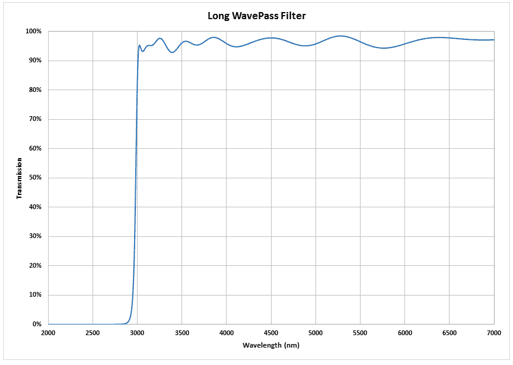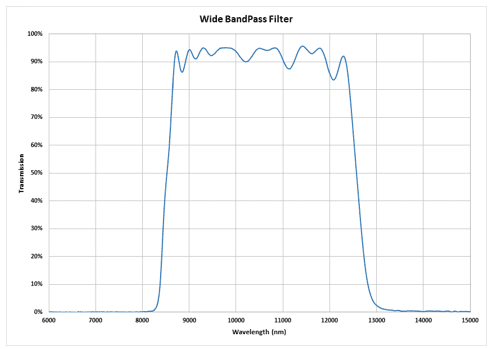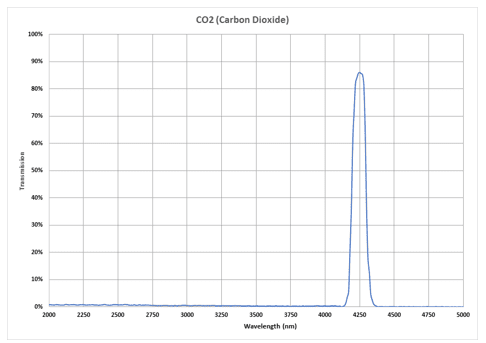How do Infrared Filters work?
The emission of Infrared wavelengths occurs naturally at all times of the day and year. However it is ‘invisible’ light that spans a very broad spectrum, so to make practical use of IR radiation we need to somehow detect, control and manipulate it to provide coherent data.
Think of a simple kitchen sieve. We put our vegetables into the sieve and pour water over them to wash them. The vegetables are bigger than the holes in the sieve and so do not pass through. But the water particles are smaller than the holes and so they can pass through. Anything smaller than the sieve holes would pass through, and anything bigger would not pass through.
The different between a sieve and an IR Filter is that a sieve allows pass-through based on physical size, whereas an IR Filter allows pass-through based on light transmission wavelength. If we extend our analogy to an IR Filter, let’s assume that the holes on the sieve allow a pass-through of 9.5µm or less, but nothing more than 9.5µm. This would be the equivalent of a ‘Short Wave Pass’ filter (see Figure 1).

Figure 1 – Example of a Short Wave Pass (SWP) IR Filter
That is where our analogy ends, because the light spectrum has different characteristics to solid objects. With light, we can not only filter out lower wavelengths, but we can apply the same principles vice-versa to higher wavelengths to produce a ‘Long Wave Pass’ filter. Here, only IR light above a certain threshold will be allowed to pass-through the filter (see Figure 2).

Figure 2 – Example of a Long Wave Pass (LWP) IR Filter
It is even possible to combine the properties of a SWP filter and a LWP filter to create what is known as a ‘Wide Band Pass’ filter, which means that between a certain cut-on and cut-off point, the IR Filter will only allow those wavelengths to pass-through (see Figure 3).

Figure 3 – Example of a Wide Band Pass (WBP) IR Filter
However, depending on the application, we may want to only allow a very specific wavelength to pass-through the IR Filter, and this is done by severely tightening up the cut-on-and cut-off bands to create a ‘Narrow Band Pass’ filter. This means that only IR light of a very specific wavelength will pass-through, and nothing else (see Figure 4).”

Figure 4 – Example of a Narrow Band Pass (NBP) IR Filter
The principles of manipulating IR wavelengths is relatively simple, but the practical application and use can be extremely complex. There are other types of IR Filter that can be designed depending on the application requirements but the fundamentals remain true to the above.
Umicore has extensive experience in designing a wide range of complex and high performance Infrared Filters for many different wavelengths.